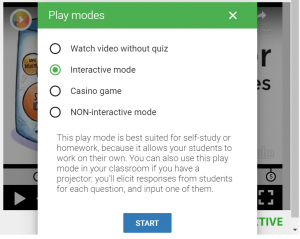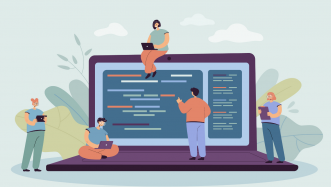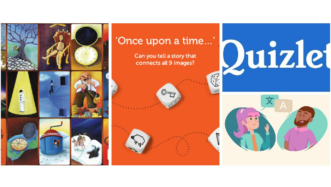As you probably have already realized we love using videos for teaching English. You may wonder why? First of all, that’s how people consume media nowadays. We stopped reading and turned to video (YouTube) and audio (podcasts) as the primary type of online content we get, whether these are vlogs, how-tos, educational videos or news pieces. Secondly, video is much more engaging than text as it involves more senses. There’ve been studies [1] [2] [3] proving that using authentic videos (e.g. from YouTube) for teaching languages motivates students, makes their classes more interesting and benefits the whole learning process. However, authentic videos can be enhanced to serve specific purposes in your classroom and further engage your students. And that’s where interactive videos come into play!
What are interactive videos?
Video is a media format that usually isn’t so interactive as the only thing you can do is to rewind, pause or fast forward a video. Not much of an interaction, I would say. But when we add annotation to a video to enrich its content, then it starts being really interactive. There is a multitude of things we can actually do: add open-ended questions, multiple choice questions, fill-in tasks, insert text boxes, add links, extra sound and commentary or a reflective pause. The possibilities are really endless and I’ll share with you some examples below to introduce you to the world of interactive videos.
How to create an interactive video?
Before we start with some examples, I want to assure you that creating an interactive video is a piece of cake. There are many online services where you can use a YouTube or Vimeo video to create interactive video for teaching a language. Personally, I’ve used three: Edpuzzle, Playposit and iSLCollective. The last one was created specifically for language teaching purposes and is the one I’m most familiar with that’s why I’ll show you some ways you can use it to develop interactive videos for teaching English.
Example 1: Focus on discussion
Our first interactive video was based on a TED-Ed video called “The ethical dilemma of self-driving cars”. Our approach here is to make this video interactive by introducing reflective pauses and open questions. These questions correspond to the questions posed
during the video. This way students get involved into the concepts discussed in the video and can talk them through before continuing. Additionally, we provided a vocabulary list attached to the video so students can check more difficult words before watching.
This approach resulted in a more engaged discussion as students could confront their ideas with what the narrator in the video presented. We also noticed that the fact that students learnt to expect that something will happen made them more focused and interested in the video. You may say there is not so much interactivity added as most of the annotation involves reflective pauses but even such a small change was enough to make a difference. By the way, the lesson plan with this really cool video is one of your favorites. See it yourself here.
Example 2: Focus on listening comprehension
Another lesson plan with interactive video I want to present is called Filter Bubbles. Here our approach is to focus on listening comprehension. We used there open comprehension questions, multiple choice questions, listening for details tasks. All of these tasks are either focused on comprehension or vocabulary.
This way we built in standard paper tasks into the video so that students can focus on watching and not writing things down (quick tip: you can easily replay a few seconds of the video before a question if your students need to listen again). We found out that students are more engaged into watching the video and we saw better comprehension results. One comment: don’t add questions more often than every 30-40 seconds.
Example 3: Focus on grammar
Finally, we used one video to make it an interactive grammar task.
In our Flipped Classroom lesson plan called The Story of Frida Kahlo (with Advanced Past Tense review) we added grammar tasks to the video. Students must watch the video and understand the context to answer grammar tasks correctly. For the sake of simplicity, we only used single-answer multiple choice questions with focus on past tenses. Basically, it means that we added a typical grammar task to a video. While it may not sound like rocket science, it actually makes it more fun, and a boring grammar task evolves into an interesting story of the famous Mexican painter.
Why not create your own interactive video?
I still feel that I’m just scratching the surface of interactive videos. iSLCollective has many features which I haven’t explored yet, including assigning videos as homework, listen and tap or even taking advantage of various play modes. I hope we got you excited about interactive videos and our examples inspired you to explore this idea further. Don’t wait any more, just try it yourself, it’s simple and fun.
Any questions about creating or using interactive videos? Comment below!

















I have been using ISL Collective especially with an advanced student, in order to cater to her interests. It’s important to use a variety of activities and not just the “fill in the gaps”. This is a god-send now that all my lessons are online!
Yeah, it’s a really nice tool to incorporate some tasks in the video itself!
I have interactive video software, been trying to find a way to utilise it as a business, looking at advertising for businesses, product advertsing, just can’t get it started
If it’s somehow better than what’s available in the market and you have some USPs then go for it!